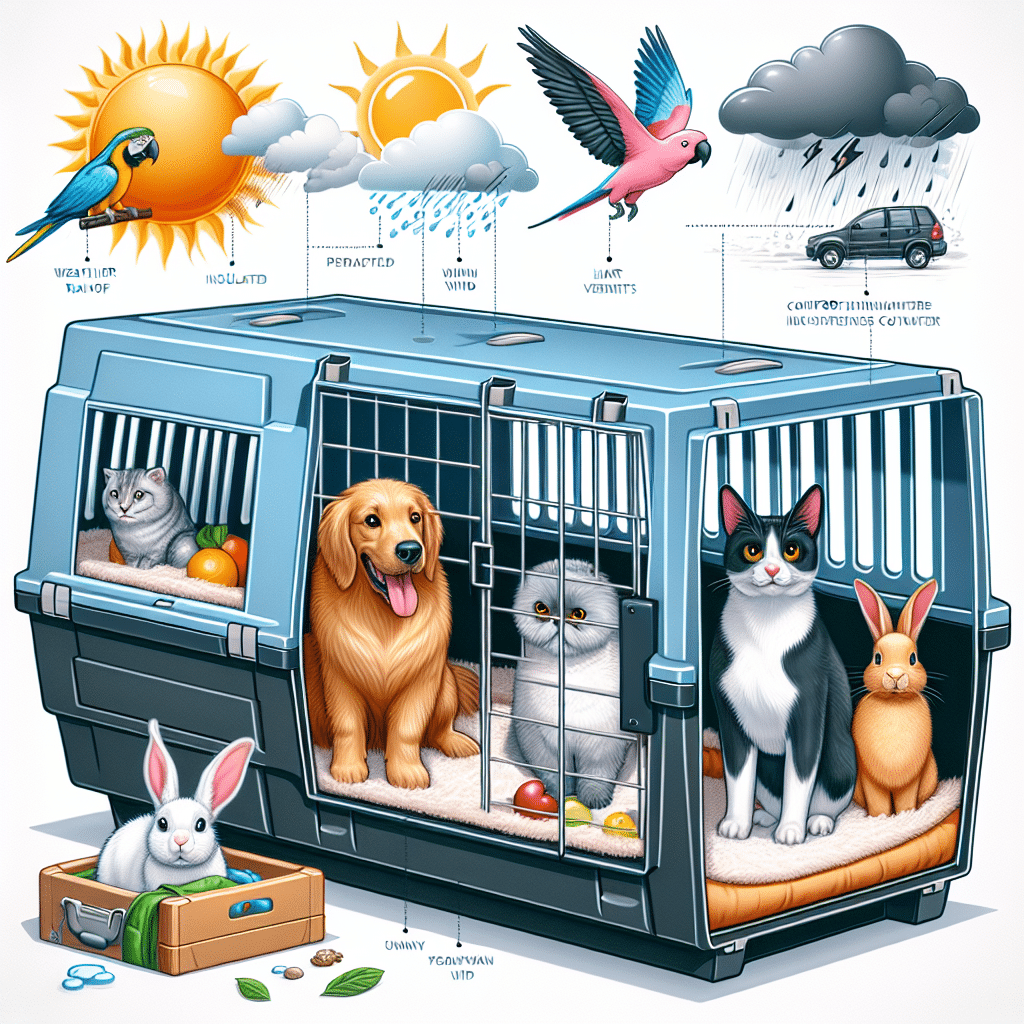Protecting Pets from Extreme Weather: Tips for Safe Travels
When it comes to traveling with pets during extreme weather events, preparation is key. Unpredictable conditions can pose significant risks to animal health and safety. Here, we aim to provide actionable insights and practical tips to ensure your furry companions remain safe and comfortable, regardless of the climate challenges ahead.
Understanding Extreme Weather Threats
Extreme weather can take many forms, from scorching heatwaves and freezing cold to thunderstorms and hurricanes. Each condition presents distinct threats that pet owners must recognize:
- Heatwaves can lead to heatstroke, dehydration, and sunburn.
- Cold weather raises the risk of frostbite and hypothermia.
- Severe storms can trigger anxiety, trauma, and potential escape.
- Natural disasters such as hurricanes or wildfires necessitate evacuation and safety protocols.
Comprehending these threats allows pet owners to formulate effective response strategies.
Pre-Travel Preparations
1. Health and Safety Check-Ups
Before any travel, schedule a vet visit. Ensure vaccinations are up to date and obtain recommendations for medications that may assist with anxiety or motion sickness. Ensure your pet has a visible ID tag along with a microchip. In an emergency, a chip significantly increases the chances of a safe reunion.
2. Research the Destination
Examine the weather forecasts and conditions of your travel destination. Knowing what to expect enables you to pack appropriate supplies and gear. Check for pet-friendly accommodations with climate-controlled environments and ample outdoor space for exercise.
3. Emergency Kit
Stock an emergency travel kit that includes:
- Water and portable bowls
- Non-perishable pet food
- Medications and a first aid kit
- Blankets, bedding, and toys
- Leash, collar, and muzzle (if necessary)
- Important documents (e.g., rabies certificate, vet contact)
Safe Travel Practices
4. Optimal Transportation Methods
Traveling in a temperature-controlled vehicle is ideal. Never leave pets in a parked car, as temperatures can rise drastically in a matter of minutes. If you’re flying, ensure the airline is pet-friendly and confirm their protocols for traveling with animals. Review both cabin and cargo requirements for pet safety.
5. Maintain Comfort During Travel
- Hydration: Keep pets hydrated en route. Stop frequently, offering water every couple of hours.
- Shade and Rest: If traveling by car, ensure your pet has access to shaded areas during stops.
Weather-Appropriate Gear
6. Heat Protection
When traveling in extreme heat:
- Invest in pet cooling vests or bandanas designed to keep pets cool.
- Carry portable water bowls and frequent breaks for hydration.
- Schedule travel during cooler parts of the day, like early mornings or late evenings.
7. Cold Weather Gear
During winter travels:
- Provide insulated pet jackets or sweaters, particularly for short-haired breeds.
- Keep paws protected with boots to guard against salt and cold surfaces.
- Offer warm bedding for overnight stays; consider heated options in extremely cold climates.
Coping with Anxiety
8. Desensitize Prior to Travel
Pets can react negatively to extreme weather changes. Prepare your pet gradually; take them on short trips and expose them to various climate conditions. This helps reduce anxiety when facing unfamiliar environments.
9. Provide Familiarity
Bringing familiar items such as toys and bedding can reduce stress. Familiar scents create a comforting environment in new and potentially stressful locations.
Emergency Protocols
10. Have an Evacuation Plan
In the event of extreme weather signaling an evacuation, ensure you have a plan:
- Know the nearest pet-friendly shelters or hotels that would accept your pets.
- Identify multiple evacuation routes. Familiarity with local geography aids in navigating during a crisis.
11. Emergency Contacts
Maintain an up-to-date list of veterinarians, emergency animal hospitals, and pet-friendly shelters throughout your travel route. This information can save precious time in case of an emergency.
Post-Travel Care
12. Observe for Changes
After travel, monitor your pet for changes in behavior, health, or appetite. Stress can manifest as lethargy or aggressive behavior. If concerns arise, consult your veterinarian immediately.
Community Resources
Engage with local pet communities for additional resources and tips specific to your travel destination. Online platforms and social media groups often provide valuable insights, suggestions on pet-friendly routes, and recommendations for local services.
Mindset for Safety
Traveling with pets during extreme weather requires vigilance and care. Approach the journey with a mindset focused on prevention, preparedness, and proactive engagement. Your attentiveness will lead to a safer travel experience for both you and your beloved pet.
Keeping your pet safe during extreme weather conditions relies heavily on understanding the risks involved, executing careful planning, and having a sound strategy in place. By prioritizing their comfort and safety throughout your travels, you can ensure that your experiences are not only enjoyable but also secure for your furry companions.
